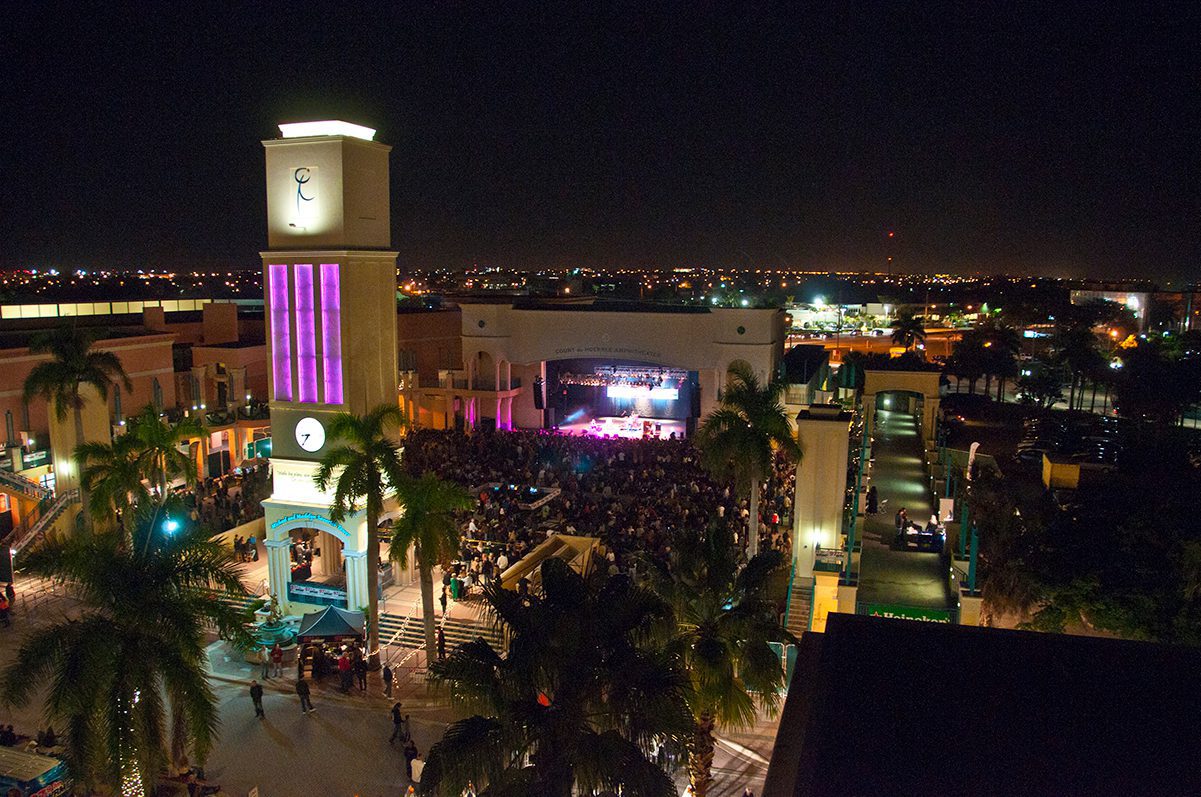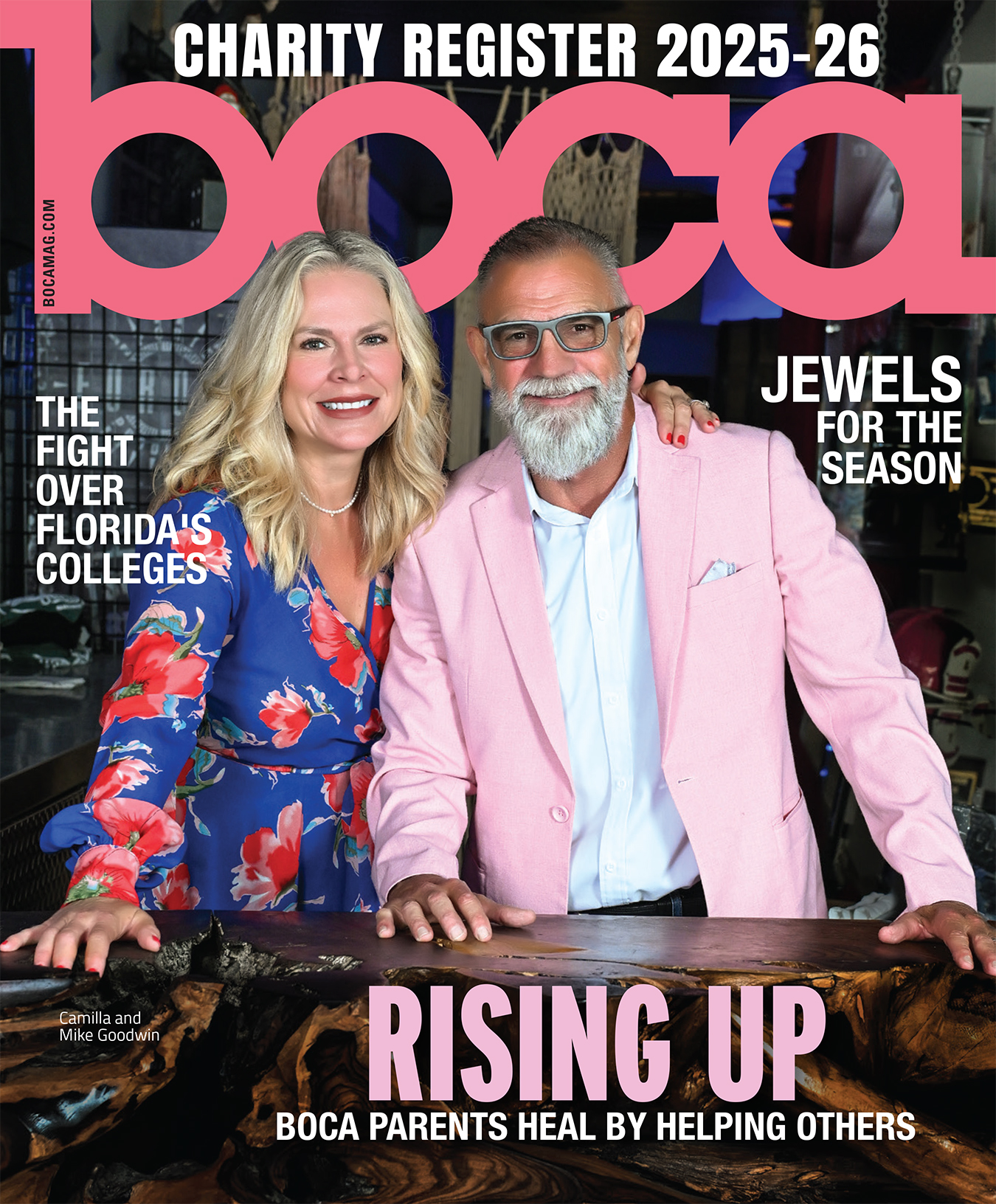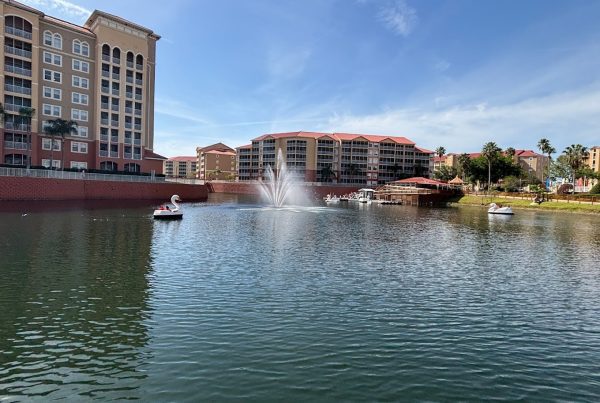Written by Tyler Childress and John Thomason
Something happened while we were sleeping through a global pandemic. Namely, Boca Raton ballooned. In just the past two or three years, the city has undergone seismic shifts in its cultural cachet, its travel infrastructure, its health care and tech sectors, its once neglected downtown. We were not exactly monochrome in the past, but now we’re in Technicolor.
None of these improvements happened overnight. As editors of this magazine and its up-to-the-minute website, we have reported on the various minutiae that have led us to where we are today: the building approvals and ground-breakings, the capital campaigns and restaurant openings. Now it’s time to breathe it all in—to recognize how far we’ve come, and the people and places responsible for this progress.
It’s long been a platitude in the business community that Boca Raton is South Florida’s best place to live, work and play. As the following pages explore, reality has finally caught up to the marketing lingo.
BRIC: A New Work Ecosystem

What it is: Outside of certain tech behemoths in Silicon Valley—you know their names—corporate headquarters have seldom been associated with lifestyle perks. But at Boca Raton Innovation Campus (BRIC), the largest office building in Florida, leisure, recreation and wellness are baked into the business cake. It’s a complex, sitting on 123 acres of land in northern Boca, that is sprawling enough to house its own Amenity Corridor complete with a 7,000-square-foot fitness center, a fully staffed health clinic, and an NFT Museum with rotating examples of digital art on high-def screens.
Paintings and photographs, often connected to local institutions like Lynn University and the Boca Raton Museum of Art, line the walls. Suspended from the ceiling of the on-site JAVA coffee shop is “Celestial Romance,” an installation of 350 aluminum starburst sculptures from the late sculptor Dorothy Gillespie. It is a work that most assuredly sparks joy, functioning like confetti captured in mid-descent, lightly swaying in the air conditioning. Walking around BRIC, you almost forget that people work here.


What it was: The building’s provenance is storied. IBM, then the dominant entity in information technology, dedicated the campus in 1970 as a center for development, manufacturing and product testing. IBM’s General Systems Division operated a staff of 10,000, and during the pivotal decades of the ‘70s and ‘80s developed the IBM Personal Computer among other pioneering products. By the end of the 1980s, manufacturing ceased, and the building failed to live up to its potential. It took the CP Group, run by the foresighted developer behind such projects as Boca Center and Mizner Park, to realize its potential. The company bought the building in 2018 for $170 million and continues to infuse it with upwards of $100 million in improvements.
Looking to the future: BRIC is now almost entirely leased, with companies such as Modernizing Medicine, Baptist Health and Bluegreen Vacations calling it home. The tenants—and guests of the campus—will enjoy even more perks looking ahead. In the coming months and years, BRIC is set to open Boca Raton’s first food hall (punnily named Byte); a flexible event space that can seat up to 1,000; a verdant outdoor courtyard for relaxation; and a STEAM Lab. To make BRIC more welcoming to visitors, construction is underway on a new lobby and porte-cochère with a concierge, which will enter directly into the Amenity Corridor.

“Silicon Valley … is now oversaturated and grossly expensive. We want to be a contender in that space. And in order to do that, we need to create an ecosystem so that employees want to go to an office building. Part of our master-planned 10-to-15-year vision for BRIC is to create that environment— an ecosystem with residential, retail, hotel, entertainment venue, grocer—amenities our existing tenants want today, but that the Apples and Googles will be attracted to.”
—Giana Pacinelli, Communications Director, CP Group
Boca Raton Regional Hospital: A Promise Worth Keeping

What it is: Boca Raton Regional Hospital is currently in the midst of a fundraising campaign of historic proportions. The Keeping the Promise campaign aims to dramatically transform and expand the hospital to service the evolving needs of Boca Raton and its surrounding areas as the city continues to grow. So far, the campaign has raised more than $230 million of its $250 million goal, all donated from local benefactors dedicated to the health and well-being of the Boca Raton community. The hospital is a recognized leader in cardiovascular care, oncology, women’s health, orthopedics, emergency medicine and neuroscience.
What it was: In 1967, Boca Regional opened its doors as the first medical center in Boca Raton. It was borne of necessity after its founder, Gloria Drummond, experienced the tragic loss of both of her children. The nearest hospital at the time was in Boynton Beach, and the extra time it took for her children to get there proved fatal. Realizing a need in the Boca community, Drummond worked tirelessly to make Boca Regional a reality. The hospital started small, as a modest 100-bed medical center, but has grown considerably over the years and continues to expand.
Looking to the future: The Keeping the Promise campaign is just as much about renewing the old as establishing the new. Just this year, the hospital broke ground on its new Gloria Drummond Patient Tower expansion, which will feature 20 state-of-the-art operating rooms, an education suite for the community and physicians, five floors of critical care beds, and more. The addition is expected to be completed in 2026. Current hospital structures like the Marcus Neuroscience Institute will be renovated and expanded, with a new unit being dedicated to the research and treatment of epilepsy.

“Health is our greatest asset. It doesn’t matter how much wealth you hold, it doesn’t matter how famous you are, if you don’t have your health, that stuff doesn’t matter.”
—Mark Larkin, president, Boca Raton Regional Hospital Foundation
Brightline: It’s Electric

What it is: The moment has finally arrived: As you read this, Boca Raton’s much anticipated—and debated—Brightline station may well be open in its 38,000-square-foot space adjacent to the downtown library. Along with a sister station in Aventura, it marks the high-speed rail company’s first expansion from its original locations in Miami, Fort Lauderdale and West Palm Beach. In Brightline’s five-year tenure, hundreds of thousands of riders have shuttled between these downtown hubs at speeds of 79 miles per hour. In addition to the speed, Brightline trains also represent the most environmentally conscious way to travel. The company’s goal is to take 3 million cars off the road annually, which will reduce the amount of carbon dioxide from the atmosphere by 100 thousand cubic tons.
Patrick Goddard, president of Brightline Trains, has high hopes for the Boca station, which “happens to be positioned equidistant between two of our existing stations, in the densest part of South Florida, with so much to offer in terms of dining, hotel stays and attractions.” While Boca Raton tourists will likely appreciate the centrality of its location (Mizner Park is just across from the station), we residents are most enticed by an alternative to driving to Miami, which, in overpopulated post-pandemic South Florida, is not a trek we would wish on our enemies.
What was there before: No offense to longtime rail-travel operators Amtrak and Tri-Rail, but they are what they are: 20th-century locomotives with too few frills and too many stops. They are still a boon for budget-conscious travelers, but let’s face it; with Brightline single tickets starting at $17, it’s just more Boca than the others.
Looking to the future: The Boca Raton Brightline station will offer touchless turnstiles and a lounge for premium ticket holders, plus a full bar and food-and-beverage service onboard the trains, which are equipped with phone chargers and Wi-Fi. In 2023, the company’s long-awaited Orlando station is finally scheduled to open, reducing Boca riders’ commute to the City of the Mouse to just over two hours.

“Brightline will take 3 million cars off the road annually, which [emit] north of 100 thousand cubic tons of CO2. It is a large part of our purpose to get people out of their cars, and out of single vehicle use, and onto trains. Every time we fill a train, we’re taking a couple hundred cars off the highway, and we think that has a meaningful impact on the environment.”
—Patrick Goddard, president, Brightline Trains
Research Park: Tomorrow’s Tech, Today

What it is: Miami may be Florida’s burgeoning tech capital, but Boca Raton isn’t far behind. Florida Atlantic University’s Research Park is fast-becoming the local go-to for tech entrepreneurs who want to get their innovative ideas off the ground. The relationship between the university and the Research Park has ushered in a surge of developments in the field of health technology from companies that began as startups in the park and are now flourishing in their own spaces. The Park is also home to FAU Tech Runway, a rich tech business ecosystem that houses startup companies and provides them with the resources they need to scale larger.
What Boca’s tech center was: Boca first made tech history in August 1981 when IBM developed the first personal computer. The “Acorn,” as it was called, was the seed of Boca’s growth into a major player on the tech scene, and this focus on innovation helped drive the development of FAU’s Research Park in 1985. With a 70-acre space that serves as a research and development playground for new ideas, the park continues a long tradition of tech innovation in Boca Raton, a history that informs and inspires today’s entrepreneurs.
Looking to the future: One of the biggest priorities at the Research Park is keeping economic development local. The Research Park continues to add new businesses to its already impressive gallery of startups, and by working closely with the city to develop future economic plans, Boca is sure to benefit.

“I think that we [in Boca] do contribute an outsized role…we’re punching above our weight in terms of the number of people and companies that are in the tech space in this region.”
—Andrew Duffell, president and CEO, FAU Research Park
Downtown Boca: Bigger and Better

What it is: Boca is finally getting the downtown it always wanted. Foot traffic in Downtown Boca has increased as more restaurants and a hotel (with more on the way) have come on line, more crosswalks have been added, and handy wayfinders line the streets showing the paths to shopping and dining, arts and entertainment. Palmetto Park Road is full of people dining, Mizner Park is jumping with community events and new diversions, and Royal Palm Place is cleared for a new hotel.
What it was: Prior to 1980, the area that is now Downtown Boca was sleepy to say the least. A land boom in the 1960s pushed development westward, leaving the city’s center neglected and in disrepair. A 1980 resolution made by the City of Boca Raton created the city’s Community Redevelopment Agency to oversee the development of the area and now, more than 40 years later, Boca Raton has become a vibrant scene of arts, culture and dining through the advent of Mizner Park (including its amphitheater and the Boca Raton Museum of Art), more recent downtown housing and dining, and more on the way. Rather than a loosely linked series of shopping areas, downtown Boca is starting to coalesce into one contiguous downtown neighborhood.
Looking to the future: Downtown Boca continues to grow, bringing in new dining and entertainment options, businesses and tourism appeal. Foodies can look forward to the opening of new venues at Mizner Park, including Shaker & Pie, the recently opened Strike 10 Bowling and continued robust community programming for the cultural center and amphitheater. The upcoming Mandarin Oriental Residences & Hotel is on tap, as is a 144-room hotel to be built at Royal Palm Place. Another stop for nature-lovers will be the newly completed Wildflower Park, a welcome addition to Boca’s gorgeous green spaces.

“I don’t see development slowing down in the next five years. It’s just going to be continual.”
—Ruby Childers, manager, Downtown Boca
This article is from the November/December 2022 issue of Boca magazine. For more like this, click here to subscribe to the magazine.







